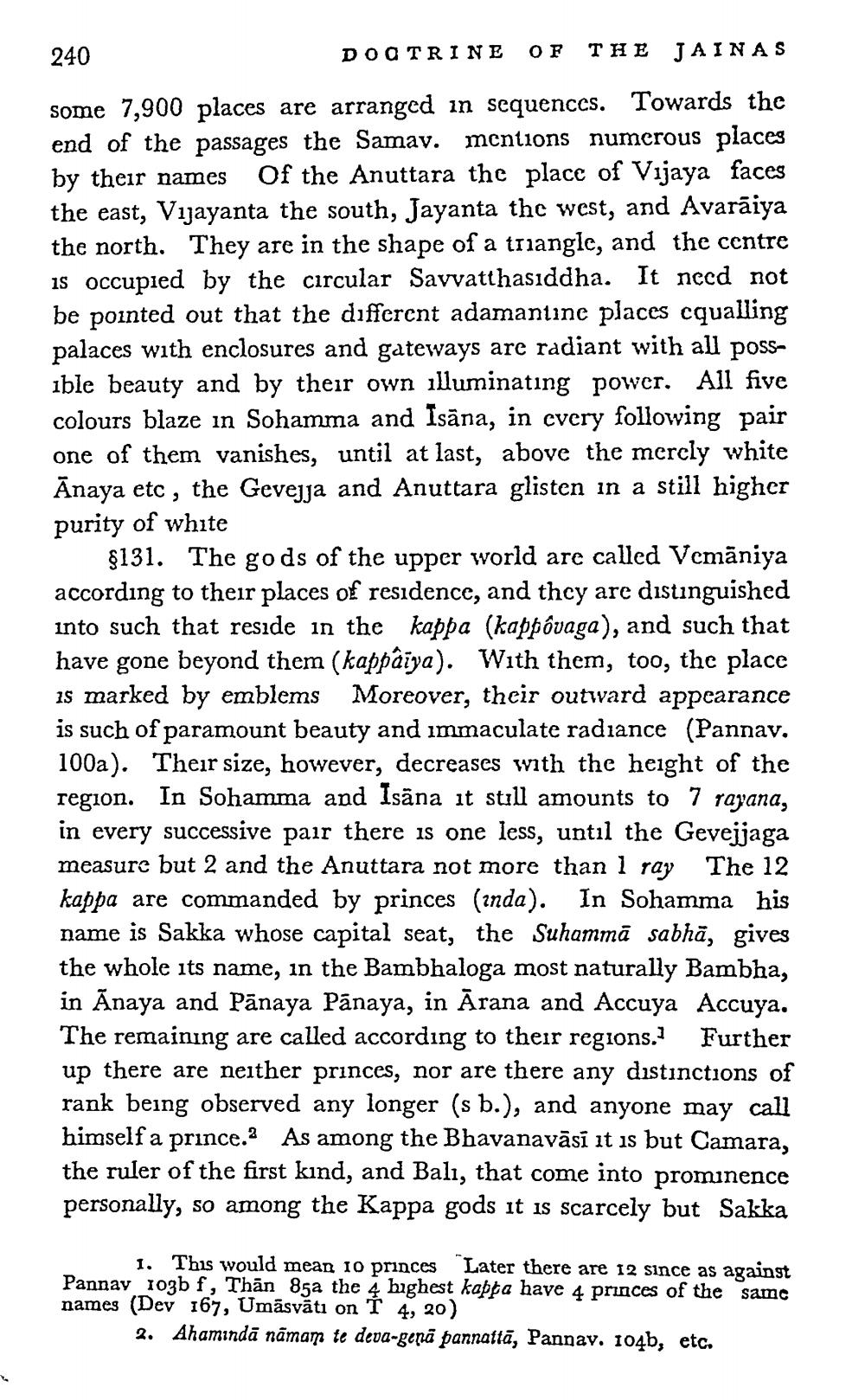________________
240
DOCTRINE OF THE JAINAS
some 7,900 places are arranged in sequences. Towards the end of the passages the Samav. mcntions numerous places by their names of the Anuttara the place of Vijaya faces the east, Vijayanta the south, Jayanta thc west, and Avarāiya the north. They are in the shape of a triangle, and the centre is occupied by the circular Savvatthasıddha. It need not be pointed out that the different adamantine places cqualling palaces with enclosures and gateways are radiant with all possible beauty and by their own illuminating power. All five colours blaze in Sohamma and Isāna, in every following pair one of them vanishes, until at last, above the mcrcly white Ānaya etc , the Gevejja and Anuttara glisten in a still higher purity of white
$131. The gods of the upper world are called Vcmāniya according to their places of residence, and thcy are distinguished into such that reside in the kappa (kappôvaga), and such that have gone beyond them (kappâiya). With them, too, the place is marked by emblems Moreover, their outward appearance is such of paramount beauty and immaculate radiance (Pannav. 100a). Their size, however, decreases with the height of the region. In Sohamma and Isāna it still amounts to 7 rayana, in every successive pair there is one less, until the Gevejjaga measure but 2 and the Anuttara not more than l ray The 12 kappa are commanded by princes (inda). In Sohamma his name is Sakka whose capital seat, the Suhammā sabhā, gives the whole its name, in the Bambhaloga most naturally Bambha, in Anaya and Pānaya Pānaya, in Arana and Accuya Accuya. The remaining are called according to their regions. Further up there are neither princes, nor are there any distinctions of rank being observed any longer (s b.), and anyone may call himself a prince. As among the Bhavanavāsí it is but Camara, the ruler of the first kind, and Balı, that come into prominence personally, so among the Kappa gods it is scarcely but Sakka
1. This would mean 10 princes Later there are 12 since as against Pannay 103bf, Thăn 85a the 4 highest kapça haye 4 princes of the same names (Dev 167, Umāsväti on T 4, 20)
2. Ahamındā nāman te deva-genā pannaitā, Pannav. 104b, etc.




